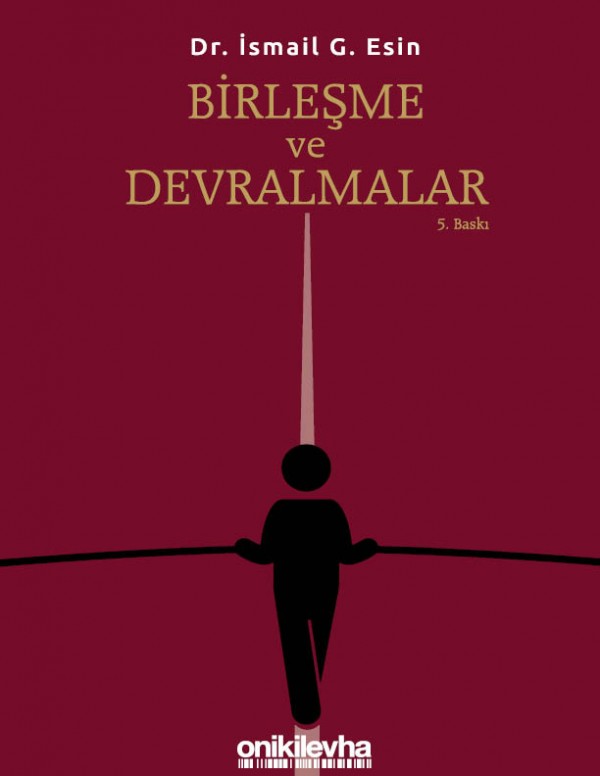Hello Ismail,…
-
Git
: -
Favorilere ekle veya çıkar
-

ᴀ⇣ Yazı karakterini küçült


On İki Levha Yayıncılık
Yayın tarihi:
Aralık 2020
Son Güncelleme:
Ocak 2022
ISBN:
978-625-432-363-8
eISBN:
978-625-7293-41-9
Baskı:
5
Sürüm:
4
Aşağıda bir kısmını gördüğünüz bu dokümana sadece pakete abone olan üyelerimiz erişebilir.
EKLER
Sayfa 718Sayfa 719EK 1:
SANAL VERİ ODASI “DATASITE” KURULUŞ HİKAYESİ: HER ŞEY NASIL BAŞLADI?
Bugün birleşme ve devralmalarda çok sık kullandığımız sanal veri odası uygulamasını…
A bit of technical background: in 2001-2002 email access out of the office was accomplished using a network of dial up platforms like AOL and UUNet which had created a phone access network with local numbers. Transmission was via analog phone lines. Text email, with no graphics or attachments was tolerable but any type of attachment would slow down the transfer speeds dramatically. There was practically no security and when you were in a hotel, you accessed the internet by plugging a phone line into the side of the telephone next to the bed and accessing the dial up of your choice.…
I had left Merrill Communications after almost a ten year period of being the top producing sales person in the world to go to work for a company which is now part of Cisco which focused on email encryption. The concept was to put an encrypted “wrapper” around the email and the attachment(s) and compress the contents. It would be smaller to transmit over the wire and it would be much safer because of the encryption provided. The only issue was the recipient had to have the same software in order to decrypt and open the message.
What was being created was a different technology. Instead of moving an image, what if the image stayed on a server and an encrypted viewer was the only software deployed on the laptop or desktop used for viewing? Concern about file size disappeared because the file wasn’t moving from a server via a wire to the screen. Security was much stronger because the image, or document was not being downloaded and control of the user was absolute. Also, all images were stored “in the cloud” with server facilities built and maintained by managed service providers.…
The technology of 1990 to 2005 for legal eDiscovery was on premise (mostly at law firms and some large corporations who had large legal requirements) storage and manual coding of the documents to find keywords, document titles, types of documents and perhaps a few other “fixed” fields. To manually code, it was necessary to have a person read the document and capture the information requested, type that information into a metadata field and release the document to the review team. This was all hardwired into the physical location of the document owner or those hired by the document owner.…
Merrill Communications acquired a company in Cleveland, Ohio USA which had a large operation of scanning machines and offshore (India) coding capability. The founder of that company had started to experiment with using a Java language based viewer, remote storage and creating an optical character layer to find information without coding, view the information without downloading and viewing the documents from many of the browsers available at that time.…
In late 2001 I returned to Merrill Communications and based on the experience gained at the email encryption company, asked to go to Cleveland and look at this new technology. It was lying dormant for six months or more because the eDiscovery industry had no interest in giving up control of the on premise and coding process.…
In February of 2002 a banker, more than one lawyer and the CFO of a major natural resources company located in the Wester US had a problem. I had done the SEC compliance work for the company for more than ten years and knew all of the participants very well. The problem was they had to sell two very big assets. The paper data room would have more than 20,000 pages…
It’s important to note that a physical data room requires multiple copies of the originals. To be precise, it’s a minimum of six paper copies. So, that’s 120,000 pages in each location. In five locations that’s 600,000 pages. Not an insignificant amount of work which all started with 20,000 pages of information.( It’s worth noting that at about this time, I encountered an attorney who had started his practice in 1956 who was trained at a prestigious law firm in New York by a man who started his practice in 1936. They exclusively worked in the M&A industry and had been using paper data rooms for all transactions since at least 1936 we confirmed. )…
With only three months to complete the asset sales and more than 15 international bidders requesting five days of eight to ten hours per day of access to the information in at least three countries, the timing was impossible. My best friend of all the participants was the senior attorney who represented the company. His estimate was that if each bidder team had five people flying to locations and each person could read 4000 pages in five days and the hosting site could monitor and arrange the data rooms over the weekend, the project review period could be done in 15 weeks. They only had 12 weeks until the refinancing had to take place. What to do?…
